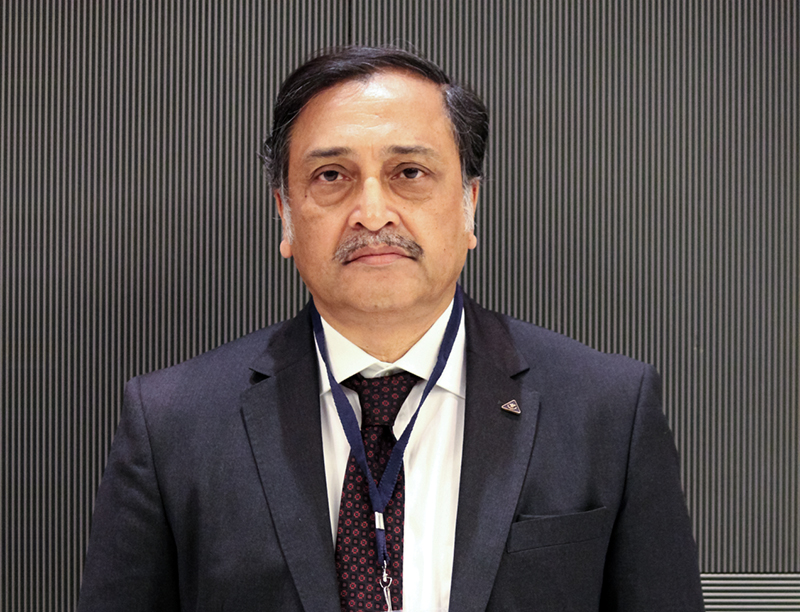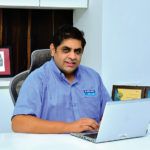Tipped with a technology transferred from a global leader, Universal Cables has long back championed the design and development of EHV cables in India, now making up to 400kV. The company is no doubt leading the Indian cable market in EHV segment, which contributes a significant 40 percent of company’s overall revenue.

Wire & Cable India recently had an interaction with Mr. Amitava Bose, COO, Universal Cables Ltd (UCL). Mr. Bose during interaction underlined priorities of UCL amid changing market dynamics in coming times and how the company would be focusing more on creating overall systems and whole cabling packages rather than just selling stand-alone cable products.
Wire & Cable India: Give us a brief outline on Universal Cables and its product portfolio.
Amitava Bose: Universal Cables Limited (UCL) is mainly into the power cable segment. In the power cable segment, we are manufacturing cables up to 400kV. In addition, we are also manufacturing those specialty cables, which are used across industries and by OEMs. We have a broad spectrum of product portfolio including LV/MV/HV/EHV XLPE power cables up to 400kV grade, PVC and rubber insulated power cables up to 11kV grade, control and instrumentation cables up to 1.1kV for any number of cores/pairs, and speciality rubber cables for trailing/flexible standards to suit to customer requirements.
WCI: Share with us some recent developments at Universal Cables. Any recent capacity expansion or any plan for such expansions in near future?
AB: Our basic thrust area has been the extra-high voltage cables, for which we are leading the market in India. We have gradually transitioned from 66kV to 220kV, and subsequently to 400kV, a big leap for any Indian company in the extra-high voltage segment. Extra-high voltage cable is a strategic product – – not only in terms of the product we sell, but also as a whole system which we do on turnkey basis from concept, design, and development to laying and commissioning. This product segment constitutes about 40 percent of our total business.
As for the expansion, in terms of both technology upgradation and capacity augmentation, we continuously execute our plans, almost one every year to say.
WCI: Where exactly are your operations located? Tell us something about the technical JVs with overseas companies and the idea behind such tie-ups.
AB: UCL’s major operations are based at Satna (MP). Besides, we have a plant in Goa, dedicated to produce only light-duty cables such as winding wires, domestic wires, and cables for irrigation pumps. The main setup is in Satna where we manufacture most of our high-end product range, including EHV cables.
In terms of technical JVs, UCL has pioneered many such tie-up in the past, few still continuing, to keep abreast of the leading technologies for cable making across the world. We have had many critical technology transfers from the leading names in their respective domains. In mid 1990s, UCL collaborated with Asea Kables AB, Sweden (now ABB) for making EHV XLPE Cables ( up to 145 kV).
Later, in 2006, we entered into a technical collaboration agreement with Furukawa Electric Co.Ltd., Japan for making EHV XLPE Cables (220kV and above). Under this highly fruitful technical collaboration with one of the world leaders in this segment, we have adopted VCV process at Satna Plant and this technical collaboration covers cable designing, manufacturing, laying, jointing, testing and installation.
WCI: How was the last FY in terms of business? What are the demand drivers for the EHV cables in India?
AB: Last year, the year which we completed, we clocked a turnover of around Rs. 1200 crores, and this year we are estimating to touch Rs. 1400 crores. We don’t operate much in the lower voltage cable segment, where the market is large. These are run-of-the-mill products, and we would rather not compete in this segment, where there are already numerous players, both organized and unorganized. We consider more the up-market segments such as specialty cables as well as high and extra-high-voltage power cables.
For EHV cables, the growing urbanization and power needs are the main driving forces creating ever increasing demand. Moreover, with smart cities, where no overhead towers are possible, there are added demand because designated load centers in smart cities would receive power through sub-transmission underground EHV cables only.
WCI: With the kind of growth happening in India, do you see foreign cable companies sharing a pie either through exports or directly investing in the country? Or, will the Indian market be as challenging to them as it is now?
AB: On part of overseas players, two things have happened so far — either they have been exporting their products to India or they have invested some capital locally. In both, the results have not been so encouraging. There were foreign companies who came to India because they considered it as the only market where they could compete. Now, you cannot compete through exports entirely, maybe for the initial periods you can but when the local industry starts growing, imports retard. Hence, few companies took chance of investing capital in India and forged some joint ventures, which all did not fructified in long-term as their expectations were higher than the market realities.
The domestic industry has grown because of its patience and confidence over potential growth of the market. Besides, we did not have alternatives other than our domestic market. The market grew as per projections because of all-round growth of the country’s economy, and the infrastructure with it. The domestic industry got rewards for its pain and patience, and for undergoing capacity building while the growth was yet to happen.
I don’t rule out the fact that few overseas companies might set their shops in future under Make in India initiative, but they would face stiff competition from the domestic players on quality and quantity front. However, as of now, I don’t see any such trend as it’s not just about selling your product, but it’s more about providing the whole systems including services.
WCI: What kind of growth trends do you foresee in the cable market? What would be UCL’s target, say in coming 3-5 years, amid this growth scenario?
AB: There is an appreciable growth in the market, which is going to grow at about 50 percent CAGR for the next five years. However, the market dynamics vis-a-vis demand and prerogative of customers may change. In those situations, being dependent on isolated products or a commodities would not be the best way to sustain in the business; you would rather go for a system or whole package to suit the customers’ specifications. Maybe in future we will have to have intelligent cables, by which I mean that there have to be certain integration of other components in the cables to perform extra functions such as temperature sensing, acoustic sensing, PD sensing, etc. As per my personal feeling, all these things are going to get implemented within this growth period. Anybody not able to keep up to this will lose a substantial part of the market share or will not be able to compete in the market.
UCL’s core competency is to make high-quality cables, our winning edge in the market, and which we would maintain in times to come. The company is keeping itself abreast of all futuristic trends which may be implemented in the cable designs in order to keep catering to the dynamic market demands.
WCI: Do you agree that laying and commissioning are also critical to realize the full potential of high-quality product, which otherwise gets wasted?
AB: You are absolutely right! This is a major concern which we have when we manufacture a cable with all the quality and the installer does its faulty installations, which we don’t have control over. That’s where the significance of training comes in the picture. People usually want to install the cable as per their own time schedule without knowing the intricacies about installations. There are many unskilled contractors who just take up the job without any knowledge of how to lay, how to seal, how not to let the moisture enter the cable, what amount of tensions to be applied on the cable, how to properly make joints, etc. Their shoddy workmanship eventually spoil a high-quality cable.
WCI: You underlined the significance of training while executing a cabling project. Does UCL have such training modules for personnel involved in cable installations?
AB: We have a training house inside our plant in Satna. We give regular training to our people, both on the desk as well as in the field also. We do this regularly, because there is a tendency in the people to skip certain imperatives. We have to remind them what is the importance of the training? If there is a problem, we make them study it thoroughly to know its genesis and possible remedies.
Another important aspect is that when there is rush in doing a job, we start to overwork people. And, that is where the mistakes start happening. We need to ensure they work in a time bound schedule, neither too fast nor too slow, maintaining a balance between healthy work and healthy mind.
WCI: Any final words?
AB: I think as India is growing. The overall infrastructure sector has lent growth to other sectors. Proactive policies like Make in India in general, and policies like IPDS in particular, have paid off very fast, and the growth momentum will continue in times to come. The demand has really grown and has given a boost to our company.




